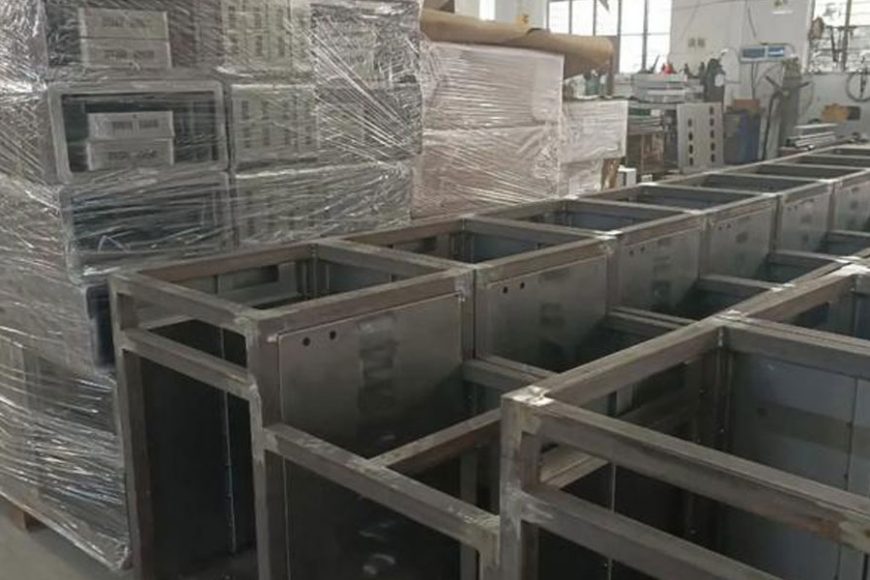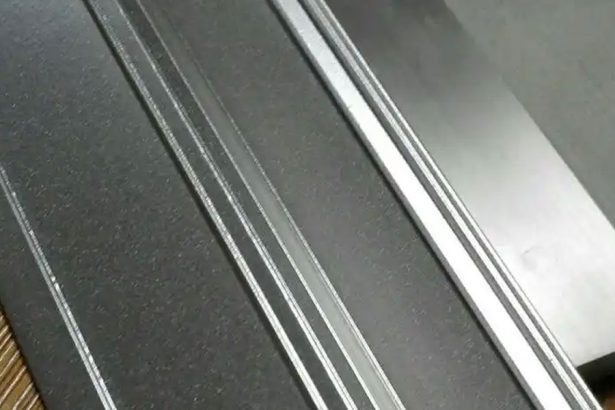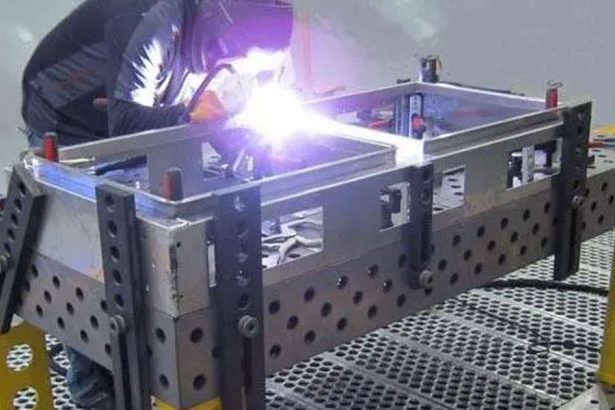The aerospace industry places unparalleled demands on component design, where every gram of weight impacts fuel efficiency, payload capacity, and overall performance. Sheet metal parts, integral to aircraft structures such as fuselages, wings, and control surfaces, are prime candidates for weight reduction optimization due to their widespread use and structural significance. The design of these components requires a delicate balance between minimizing weight, maintaining structural integrity, and ensuring manufacturability, all while adhering to stringent safety and regulatory standards. This article explores the principles, methodologies, materials, manufacturing processes, and computational tools employed in the weight reduction optimization design of aerospace sheet metal parts, providing a comprehensive examination of the field.
Historical Context of Aerospace Sheet Metal Design
The evolution of aerospace sheet metal design is rooted in the early days of aviation. In the 1910s and 1920s, aircraft such as the Wright Flyer and early biplanes relied on wood and fabric structures, with metal used sparingly due to its weight. The introduction of aluminum alloys in the 1930s, notably with aircraft like the Douglas DC-3, marked a turning point. Aluminum’s favorable strength-to-weight ratio made it the material of choice for sheet metal parts, enabling the construction of monocoque and semi-monocoque structures that distributed loads across thin metal skins.
World War II accelerated advancements in sheet metal fabrication, with innovations in forming, joining, and assembly techniques. Post-war, the jet age demanded even lighter and stronger materials to cope with higher speeds and altitudes, leading to the development of advanced aluminum alloys like 2024 and 7075. By the late 20th century, the rise of composite materials and titanium alloys began to challenge aluminum’s dominance, but sheet metal remained critical due to its cost-effectiveness and manufacturability.
The modern era of aerospace design, driven by environmental concerns and economic pressures, has intensified the focus on weight reduction. Fuel efficiency, driven by rising costs and carbon emission regulations, has made weight optimization a central pillar of aerospace engineering. Sheet metal parts, while traditional, continue to evolve through advanced design methodologies, novel materials, and cutting-edge manufacturing techniques.
Principles of Weight Reduction in Sheet Metal Design
Weight reduction in aerospace sheet metal parts is governed by several core principles, each addressing the interplay between material properties, structural efficiency, and manufacturing constraints.
Material Selection
The choice of material is the foundation of weight optimization. Aluminum alloys, such as 2024-T3 and 7075-T6, remain prevalent due to their high strength-to-weight ratios, corrosion resistance, and established manufacturing processes. However, newer materials like aluminum-lithium alloys (e.g., 2198) offer up to 10% lower density and improved stiffness, making them increasingly popular for applications like fuselage skins.
Titanium alloys, such as Ti-6Al-4V, are used in high-temperature or high-strength applications, such as engine mounts or wing fittings, despite their higher cost. Magnesium alloys, though less common due to corrosion concerns, are occasionally employed in non-critical components for their extremely low density.
Structural Efficiency
Structural efficiency refers to the design of sheet metal parts to maximize load-carrying capacity per unit weight. Techniques include:
- Thinning: Reducing sheet thickness while maintaining strength through optimized load paths or advanced alloys.
- Stiffening: Adding ribs, stringers, or corrugations to enhance buckling resistance without significant weight penalties.
- Topology Optimization: Using computational tools to identify optimal material distribution, removing unnecessary material from low-stress regions.
Manufacturability
Weight reduction must not compromise manufacturability. Complex designs may increase production costs or introduce defects, negating weight savings. Designers must consider factors like formability, weldability, and assembly tolerances when optimizing sheet metal parts.
Regulatory Compliance
Aerospace components must meet rigorous standards set by bodies like the Federal Aviation Administration (FAA) or the European Union Aviation Safety Agency (EASA). Weight reduction strategies must ensure compliance with fatigue, fracture, and crashworthiness requirements.
Methodologies for Weight Reduction Optimization
Several methodologies are employed to achieve weight reduction in sheet metal parts, ranging from empirical design rules to advanced computational techniques.
Parametric Design
Parametric design involves defining sheet metal parts using variables (e.g., thickness, rib spacing) that can be adjusted to optimize weight. This approach is often used in the preliminary design phase, where engineers explore trade-offs between weight, strength, and cost.
Finite Element Analysis (FEA)
Finite Element Analysis (FEA) is a cornerstone of modern aerospace design. By simulating structural behavior under various loads, FEA allows engineers to identify areas of excess material that can be removed. For sheet metal parts, FEA is used to assess stresses, deflections, and buckling modes, ensuring that weight reductions do not compromise safety.
Topology Optimization
Topology optimization uses algorithms to redistribute material within a design space, minimizing weight while satisfying structural constraints. For sheet metal parts, this may involve determining the optimal placement of stiffeners or cutouts. Software like Altair OptiStruct or ANSYS Topology Optimization is commonly used for this purpose.
Multi-Disciplinary Optimization (MDO)
Multi-Disciplinary Optimization integrates multiple design objectives, such as weight, aerodynamics, and manufacturing cost, into a single optimization framework. MDO is particularly valuable in aerospace, where trade-offs between disciplines are common. For example, reducing the thickness of a wing skin may save weight but increase aerodynamic drag, necessitating a holistic approach.
Design for Additive Manufacturing (DfAM)
While additive manufacturing (3D printing) is traditionally associated with complex geometries, it is increasingly used for sheet metal-like structures. DfAM principles allow engineers to create lightweight lattice structures or hybrid designs that combine sheet metal with additively manufactured features.
Advanced Materials for Sheet Metal Parts
The development of advanced materials has significantly expanded the possibilities for weight reduction in aerospace sheet metal parts. Below is a detailed comparison of commonly used materials, including their properties and applications.
| Material | Density (g/cm³) | Yield Strength (MPa) | Modulus of Elasticity (GPa) | Corrosion Resistance | Typical Applications | Cost ($/kg, Approx.) |
|---|---|---|---|---|---|---|
| Aluminum 2024-T3 | 2.78 | 345 | 73 | Moderate | Fuselage skins, wing panels | 5-10 |
| Aluminum 7075-T6 | 2.81 | 505 | 72 | Moderate | Structural frames, spars | 8-15 |
| Aluminum-Lithium 2198 | 2.63 | 450 | 77 | Good | Fuselage panels, stringers | 15-25 |
| Titanium Ti-6Al-4V | 4.43 | 880 | 114 | Excellent | Engine mounts, wing fittings | 50-100 |
| Magnesium AZ31B | 1.77 | 200 | 45 | Poor | Non-critical panels, brackets | 10-20 |
Aluminum Alloys
Aluminum alloys dominate aerospace sheet metal applications due to their balance of performance and cost. The 2000-series (e.g., 2024) is favored for its fatigue resistance, while the 7000-series (e.g., 7075) offers superior strength. Aluminum-lithium alloys, such as 2198, reduce density by incorporating lithium, which also enhances stiffness and fatigue performance.
Titanium Alloys
Titanium alloys are reserved for applications requiring high strength, temperature resistance, or corrosion resistance. Their high cost limits their use to critical components, but their weight-saving potential in high-load areas is significant.
Magnesium Alloys
Magnesium alloys offer the lowest density among metallic options but are limited by poor corrosion resistance and flammability concerns. Surface treatments, such as chromate coatings, are often required to improve durability.
Emerging Materials
Research into metal matrix composites (MMCs) and nanostructured alloys promises further weight reductions. For example, aluminum-based MMCs reinforced with ceramic particles can achieve up to 20% weight savings over conventional alloys, though their adoption is hindered by high costs and manufacturing challenges.
Manufacturing Processes for Optimized Sheet Metal Parts
The choice of manufacturing process significantly influences the weight optimization of sheet metal parts. Each process has unique advantages and limitations, as outlined below.
Sheet Metal Forming
Forming processes, such as stamping, bending, and stretch forming, are widely used to shape sheet metal parts. Advances in high-strength alloys require precise control of forming parameters to avoid defects like springback or cracking.
Hydroforming
Hydroforming uses pressurized fluid to shape sheet metal into complex geometries, enabling the creation of lightweight, seamless structures. This process is particularly effective for components like fuselage panels, where uniform thickness and minimal joints reduce weight.
Superplastic Forming
Superplastic forming (SPF) allows certain alloys, such as titanium and specific aluminum grades, to be stretched into intricate shapes at elevated temperatures. SPF is often combined with diffusion bonding to create lightweight, monolithic structures with fewer fasteners.
Laser Cutting and Waterjet Cutting
Precision cutting techniques, such as laser and waterjet cutting, enable the creation of complex cutouts and perforations that remove unnecessary material. These processes are critical for topology-optimized designs.
Joining Techniques
Joining methods, such as riveting, welding, and adhesive bonding, impact weight and structural performance. Friction stir welding (FSW), for example, produces high-strength, lightweight joints without the need for heavy fasteners.
| Process | Weight Impact | Complexity | Cost | Applications |
|---|---|---|---|---|
| Sheet Metal Forming | Moderate | Low | Low | Fuselage skins, wing panels |
| Hydroforming | Low | High | High | Complex panels, seamless parts |
| Superplastic Forming | Very Low | Very High | High | Titanium structures, engine parts |
| Laser Cutting | Low | Moderate | Moderate | Cutouts, perforations |
| Friction Stir Welding | Low | High | High | High-strength joints |
Computational Tools and Software
The complexity of weight reduction optimization necessitates the use of advanced computational tools. These tools enable engineers to simulate, analyze, and optimize sheet metal designs with high accuracy.
CAD Software
Computer-Aided Design (CAD) software, such as CATIA, Siemens NX, and SolidWorks, is used to create detailed 3D models of sheet metal parts. These models serve as the basis for subsequent analysis and optimization.
CAE Software
Computer-Aided Engineering (CAE) tools, including ANSYS, Abaqus, and Nastran, perform FEA and other simulations to evaluate structural performance. These tools are critical for identifying weight-saving opportunities without compromising safety.
Optimization Software
Optimization software, such as Altair OptiStruct, ANSYS DesignXplorer, and MATLAB, supports topology, shape, and parametric optimization. These tools integrate with CAE platforms to automate the design process.
Digital Twins
Digital twin technology creates virtual replicas of sheet metal parts, allowing engineers to monitor performance throughout the component’s lifecycle. This approach facilitates iterative weight optimization based on real-world data.
Case Studies in Weight Reduction
Boeing 787 Dreamliner
The Boeing 787 Dreamliner exemplifies weight reduction in sheet metal design. Its fuselage incorporates aluminum-lithium alloys and topology-optimized stringers, achieving a 10% weight reduction compared to traditional aluminum structures. Advanced manufacturing techniques, such as laser cutting and friction stir welding, further reduce weight by minimizing fasteners.
Airbus A350 XWB
The Airbus A350 XWB uses a combination of aluminum-lithium alloys and titanium sheet metal parts in its wing and fuselage structures. Topology optimization and superplastic forming enable the creation of lightweight, complex geometries, contributing to a 15% weight saving over earlier designs.
SpaceX Starship
SpaceX’s Starship employs stainless steel sheet metal for its fuselage, leveraging its high strength and thermal resistance. Laser-cut perforations and optimized weld patterns reduce weight while maintaining structural integrity, demonstrating the potential of traditional materials in modern applications.
Challenges in Weight Reduction Optimization
Despite significant advancements, weight reduction optimization faces several challenges:
- Cost vs. Performance: Advanced materials and processes often increase production costs, requiring careful trade-offs.
- Manufacturing Constraints: Complex designs may exceed the capabilities of existing manufacturing equipment or introduce defects.
- Fatigue and Durability: Weight reductions can increase susceptibility to fatigue, necessitating rigorous testing.
- Regulatory Hurdles: New materials and designs must undergo extensive certification, delaying implementation.
Future Trends in Sheet Metal Weight Optimization
The future of aerospace sheet metal design is shaped by emerging technologies and industry trends:
- Additive Manufacturing: Hybrid approaches combining sheet metal with 3D-printed features offer new possibilities for weight reduction.
- Artificial Intelligence: AI-driven design tools can accelerate optimization by predicting optimal material distributions and manufacturing parameters.
- Sustainable Materials: The development of recyclable or bio-based alloys could reduce environmental impact while maintaining performance.
- Integrated Design Systems: Advances in digital twins and MDO will enable more holistic optimization, considering lifecycle performance from design to retirement.
Conclusion
The weight reduction optimization design of aerospace sheet metal parts is a multifaceted discipline that combines material science, structural engineering, manufacturing technology, and computational analysis. By leveraging advanced materials, innovative manufacturing processes, and powerful computational tools, engineers can achieve significant weight savings while meeting the aerospace industry’s demanding requirements. As the industry evolves, continued research and development will drive further advancements, ensuring that sheet metal parts remain a cornerstone of lightweight, efficient, and safe aircraft designs.




